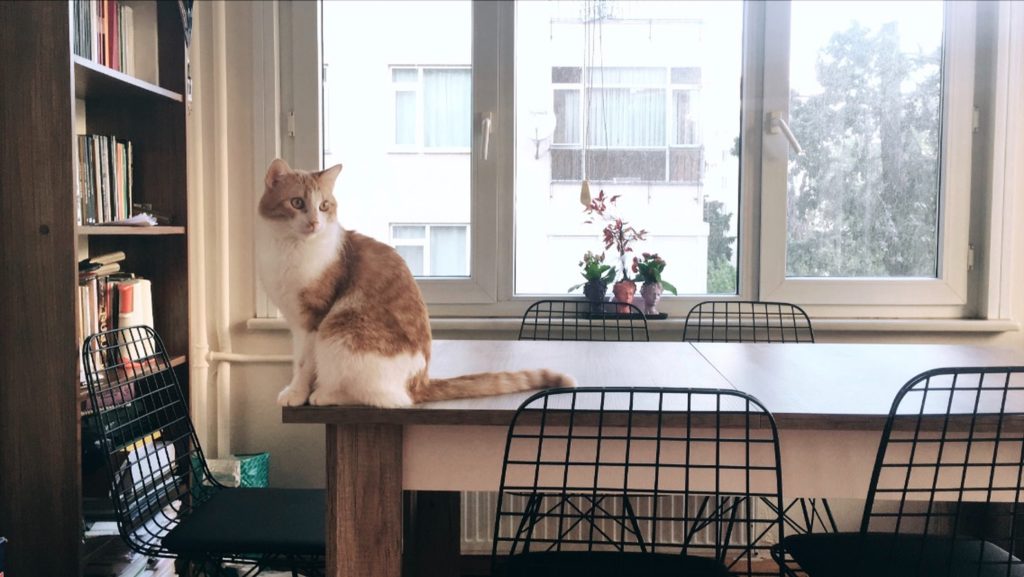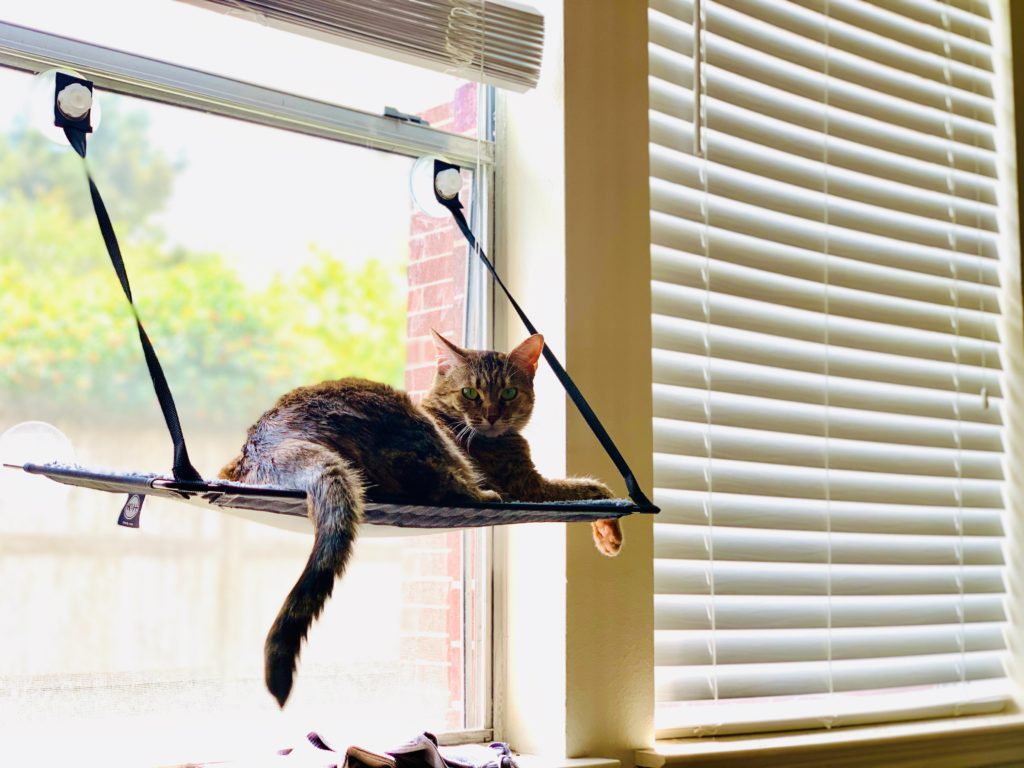You should teach your cat to stop jumping on the table with a clear command like “No” and some treats as a reward.
All the residents are sitting comfortably at the table, so it’s obvious that your cat wants to be the centre of attention and will climb onto the table to get everyone’s attention. This can become annoying for the owner in the long run.
As a permanent solution, there is only one clear, consistent action and one magic word. “NO”! Your cat should get to know this word from an early age and understand that it has done something forbidden.
You should always use the same, strict tone when giving a command.
If your cat jumps on the table, tell him a clear “no” and point to a chair or another place where your cat should sit. As a reward, your cat will always get a small treat and a stroke.
If your cat does not obey your command and remains sitting on the table, repeat the word no again and also place a small treat or your cat’s favourite toy on the place where your cat should go. If your cat accepts the place, stroke your cat as a reward.
It is always important that you remain consistent and do not make any exceptions with your cat. Your cat will not understand if he is allowed on the table one day and not the other. It will be exhausting at first, but success will pay off after a few days.
It is important for your cat to have enough things to do in the house, such as a scratching post or other climbing facilities. This way, the table is no longer interesting enough for your cat and your cat will ignore it all by itself.

To prevent your cat from being tempted in the first place, you should clear the leftovers and food off the table after eating and, if necessary, close the kitchen door when you are out.
Another alternative to the “No” command for particularly stubborn house cats is the water pistol. Always give the command first and punctuate it with a splash of water. The little scare can be used to stop your cat from jumping on the table.
How can I show my cat what it is not allowed to do?
Especially when your cat is young, it is important to be consistent and strict so that your cat learns from an early age what it is not allowed to do. A clear command like “No” should always be said in the same tone of voice.
Unfortunately, cats cannot be trained as easily as dogs, as cats are much more independent and autonomous from their owners. Nevertheless, you can clearly signal to your cat when it has to refrain from doing something. A clear command like “No” belongs in every cat house and should definitely be taught from an early age.
If your cat doesn’t go to the litter box at first, you can take her after her business and put her on the litter box. In this way she will learn where to do her actual business.
If your cat jumps on the table or cupboard, a clear no should follow. If your cat obeys, it is important that you stroke it or give it a treat as a reward. This tells your cat that it should listen to your command and that your cat will be rewarded afterwards.

Especially when your cat is very young, you should always be consistent and strict. A little biting during play should be stopped just as quickly as jumping on the dining table.
The older your cats get, the more difficult it is to resolve deadlocked situations.
What should you never do when training a cat?
Grabbing your cat by the fur, threatening it with violence or shouting at it at the top of your voice is not proper cat training and should never be done by you.
You should never do the following things when training a cat:
- Grabbing your cat by the fur
Grabbing your cat by the fur is something only a mother does with her kittens and should never be done by you.
- Yelling at your cat
Cats have very sensitive ears and should not be yelled at by you. A gently raised voice is quite sufficient to give a command such as “No”.
- Hitting your cat
Violence of any kind should never be the means of training a naughty cat. This can subsequently destroy the bond with the owner and lead to injury.
- Forcing your cat to do something
Cats should never be forced to do anything. This way your cat will not learn what it is allowed to do and what it is not allowed to do.
- Nagging your cat too late
If your cat has ruined your couch or jumped on the table, the reprimand and the forbidden command must come immediately. Only a few hours later it no longer makes sense to grumble about something that happened too long ago. Your cat has already forgotten this one.
Down below we have summarized our most popular posts for you in a great overview:
- Why do cats groom themselves after eating?
- Cat does not like treats
- How do cats cool off in the summer?
- How to keep ants out of the cat food
- Cat only wants to eat
- Do cats like it warm or cold?
- Is there food envy in cats
- How do cats cool off in the summer?
- How long does open wet cat food keep?
- Strange cat comes again and again
Summary – Teaching your cat not to go on the table
You should teach your cat to stop jumping on the table with a clear command like “No” and some treats as a reward.
If your cat jumps on the table, tell him a clear “no” and point to a chair or another place where your cat should sit. As a reward, she will always get a small treat and a stroke. For stubborn cats, you can also use a small water pistol as a tool.
It is important that you always remain consistent and strict when your cat jumps on the table.
It is also advisable that your cat has enough to do in the house. A scratching post or other climbing possibilities will make your cat forget the table completely.
Especially when your cat is young, it is important that your cat associates the command word “no” with things that are not allowed. Educating cats later on becomes more and more difficult as the years go by.
As a training measure, you must never do violence to your cat, yell at it or grab it by the fur. This can lead to psychological and physical injuries and is also strictly forbidden.

